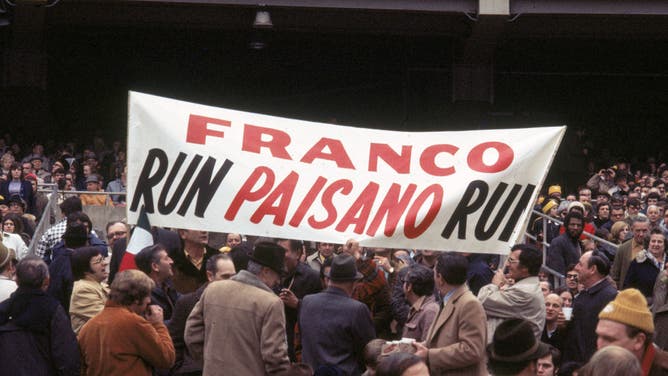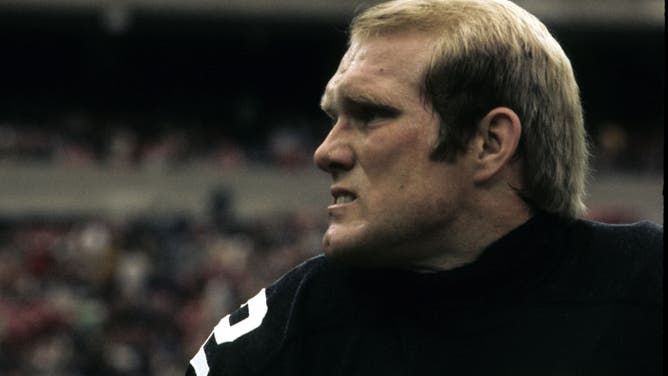Tailgate For The Displaced: Remembering The Immaculate Reception In The Wake Of Franco Harris' Death
I came to know Franco Harris in the early months of 1975, soon after the Pittsburgh Steelers’ first Super Bowl victory.
I was a 25-year-old kid, writing the biography of Rocky Bleier, Franco’s blocking back, under a crushing deadline. In order to have the book in stores for the next football season, we needed to finish a 100,000-word manuscript in three months. Written on a manual typewriter!
I needed Franco as a primary source, but he was flying all over the country, heavily in demand. After several weeks of anxiety, Ed Kiely, Steelers public relations director, arranged what he described as “a few minutes” for me in the club’s offices at Three Rivers Stadium.
Franco arrived precisely on time, perfectly relaxed. I began buzzing through my questions, tape recorder rolling. He answered slowly, thoughtfully, in his mellow voice.
I kept saying, “Franco, I know you’re busy. I have just one more….”
He stopped me with his easy smile: “Terry, take your time. I’d do anything for Rocky.”
So we continued. More than an hour passed when Kiely appeared in the doorway and asked me to wrap it up.
Franco calmed him: “It’s alright, Ed. We’re almost done.”
When we finished, Franco gave me his personal phone number and said, “Anything else you need, just call me.”
Franco's father was an African-American who served during World War II in Italy, where he took Gina Parenti as his Italian war bride.
The Italian population in Pittsburgh worshipped Franco. A pizza shop owner named Al Vento formed "Franco's Italian Army," a fan club that sat together in Three Rivers Stadium wearing army helmets adorned with #32. Franco made many appearances with his Army, raising money for Children's Hospital of Pittsburgh. Even Frank Sinatra joined Franco's Italian Army.
Franco was so personable, so relate-able that all of Pittsburgh's many ethnic groups gravitated to him. The Irish called him "Frank O'Harris."
Franco Harris' death Tuesday night prompts the following story…
The Immaculate Reception, 50 Years Later
In the beautiful, rolling foothills of the Allegheny Mountains, quite an unusual sight was developing on the morning of Dec. 23, 1972.
Under clear skies, with temperatures headed into the low 40s, an unscripted caravan of Pittsburgh Steeler faithful was driving northwest on the Pennsylvania Turnpike.
Their vehicles plastered with black-and-gold bumper stickers, they honked horns and pumped fists to each other. Some rolled down their windows to salute with cans of Iron City, Rolling Rock or Duquesne beer.
They’d waited 40 years for this moment. Their Pittsburgh Steelers, founded in 1933, had never won a Super Bowl (the sixth edition upcoming three weeks hence), never won an NFL championship, never a conference, never a division, never anything.

Steelers fans hold up a sign encouraging running back Franco Harris during Pittsburgh's 13-7 win over the Oakland Raiders in the 1972 AFC Divisional Playoff at Three Rivers Stadium on Dec. 23, 1972. (Getty Images)
Theirs was the franchise that drafted Pittsburgh-born Johnny Unitas in 1955 and cut him in training camp. The franchise that traded away Len Dawson in 1959, only to watch him hoist a Super Bowl trophy with the Kansas City Chiefs. The franchise poised to win the NFL’s Eastern Division on the final day of the 1963 season until Frank Gifford broke hearts with a one-handed catch.
From the day of Gifford’s heroics through 1971 — eight straight losing seasons — the Steelers’ record was 49 games under .500. So these fans were towing a lot of baggage toward the Pennsylvania-Ohio border. I was happily in the middle of it, driving with my younger brother in our family’s Volkswagen hatchback.
In those days, fearing television availability would limit in-stadium attendance, NFL owners imposed a blackout of home markets, even for guaranteed sellouts such as this playoff game against the Oakland Raiders.
Tailgate For The Displaced
For fans without tickets, the strategy was to find a precious motel room outside the 60-mile blackout radius – in Erie or Johnstown/Altoona, Pa., in Ohio or West Virginia.
Hours before the 1pm kickoff, the good ’Burghers stormed these destinations in waves. Some of them came directly from the midnight-to-8am shift, wearing heavy industrial boots, their hair and clothes still flecked with steel-mill soot.
They brought the dishes of their Polish, Slovak and Italian ancestors – pierogis, sausage, pepperoni rolls, potato-patch fries, stuffed cabbage (“pigs in the blanket”), haluszki – plus the Pittsburgh-made favorites: Isaly’s chipped ham, Heinz ketchup and mustard, Clark and Zagnut candy bars and Klondike ice cream bars. Their beverage of choice was western Pennsylvania-brewed beer and bottles of whiskey to mix boilermakers. It was a tailgate party for the displaced.
Our motel in Youngstown, Ohio, was a typical 1950s construction – two levels, 100-or-so rooms facing a small courtyard. We all kept our doors open, mingling, offering food, sharing tales of empty Sundays in Pitt Stadium and Forbes Field with Bobby Layne and John Henry Johnson.

Hall of Fame quarterback Terry Bradshaw. (Getty Images)
But here in the holiday week of 1972, our misery was ending. After so many misses, the Steelers finally hit on a few draft choices. Mean Joe Greene, No. 4 overall pick in 1969, and Terry Bradshaw, No. 1 overall in 1970, were two of five future Hall of Famers on that team.
The game was no more artistic than shoveling coal into a blast furnace. Defense dominated. Roy Gerela’s two field goals seemed good enough until Ken Stabler scrambled 30 yards to give Oakland a 7-6 lead with just more than a minute to play. The motel room doors remained open, so we heard each other’s groans.
The Ricochet to Franco Harris
Then the famous play occurred. We shook Youngstown with a roar that had been four decades rising in our throats. We streamed into the courtyard. Strangers hugged, some of them weeping.
Nine years later, I was at CBS Sports, producing the newly formed broadcast team of Pat Summerall and John Madden. Anytime I wanted to tweak Madden, the easiest ruse was to mention the Immaculate Reception. John was still unhappy about it.
Needling aside, I always wondered: When Bradshaw threw to John “Frenchy” Fuqua, Oakland safety Jack Tatum was in perfect position to knock the pass down or allow Fuqua to catch it and tackle him. Either play would have ended the game.
But this was Tatum, “The Assassin.” A few years later, Pittsburgh coach Chuck Noll would refer to him and his secondary mate, George Atkinson, as a “criminal element” in the league. So when Bradshaw’ pass hung in the air, Tatum as always went for the kill shot, causing the ricochet to Franco.
In the early ’80s, riding in a car with Madden, Summerall and director Sandy Grossman, the topic surfaced again. I asked John, “Rather than blow up Frenchy Fuqua, why didn’t Tatum just knock the ball down?”
Madden looked out the window, sighed deeply, paused, then said, “That wasn’t him.”